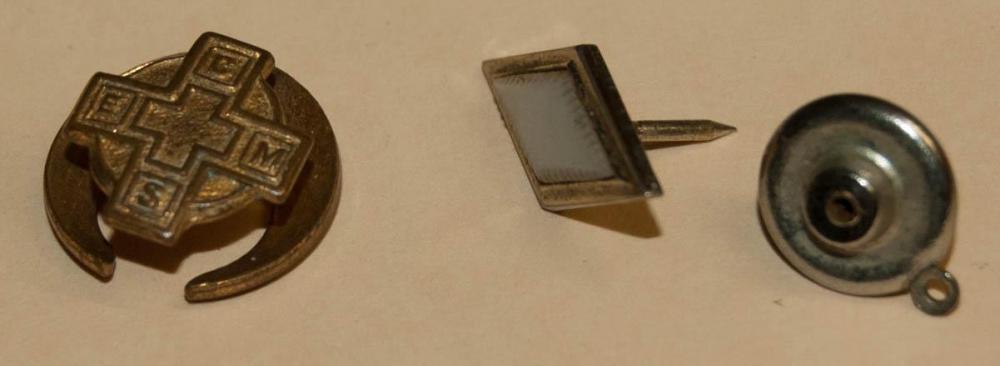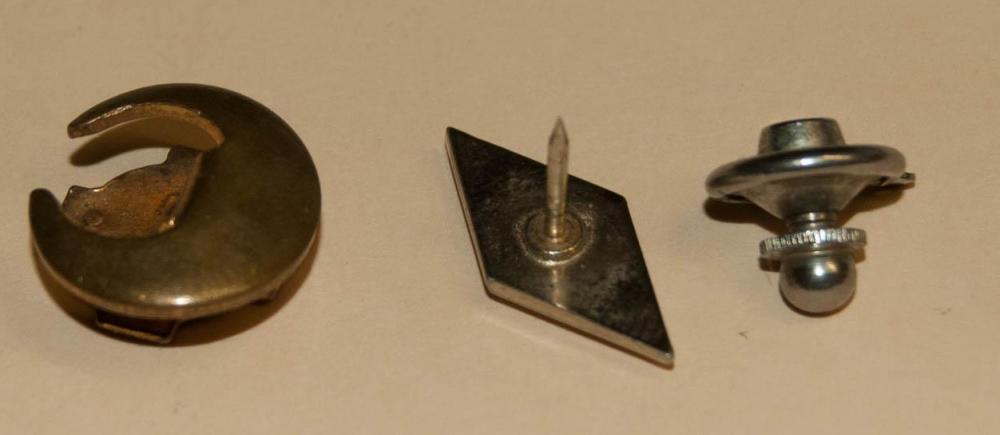-
Posts
12,742 -
Joined
-
Last visited
-
Days Won
339
Content Type
Profiles
Forums
Events
Downloads
Store
Gallery
Articles
Everything posted by Rob
-
Yep. That's why I use a two point system - acceptable or not. The number on the slab might attract your attention, but ultimately you look at the coin and say yes or no.
-
I'm not sure why everyone is getting so exercised. If you aren't happy, don't bid and move on, just as everybody does on ebay. It isn't as if the world is short of online auctions. Whether there is online bidding or not, it is always more reassuring to view any lot in hand prior to bidding, or get someone to view on your behalf. As Jaggy says, when the catalogue appears it will be reviewed and bids placed as appropriate. It's only in the past 15 years or so that people have had the luxury of on-line catalogues with real-time bidding facilities. Before that you either had to view beforehand or place a blind commission bid based on the catalogue description.
-
https://metro.co.uk/video/american-woman-cuts-hole-face-mask-make-easier-breathe-2164644/
-
Scrap man it is then. Added bonus is that he doesn't complain he hasn't received them or leave negative feedback, and it's solved the problem in the minimum time.
-
If Paddy got £3.30/kg and you have 10kg, that's £33 by my reckoning, which is £30 more than the few quid indicated in the previous post. The (time consuming) alternative is to go through them all, and pick out the ones you think might realistically sell for more than the nominal 3p per coin after costs and put them on ebay. They will be in good company there as they will blend in quite nicely with the mountains of crap already listed. Dealers would happily take them if there was a good premium to be made over scrap - but usually there isn't.
-
Given CO2 levels only really started taking off since WW1 and the world population in 1928 was 2 billion, it would not be unreasonable to set a target at 25% of the current global population, and probably lower, just to stabilise global warming. Nobody is willing to talk about that though. Unfortunately coronavirus is not sufficient. If you want to specifically reduce the human population whilst maintaining and supporting other life forms, you are pretty much restricted to the tried and tested policies of war and genocide, however unpalatable that might be.
-

Intriguing World news about Coronavirus
Rob replied to Paddy's topic in Nothing whatsoever to do with coins area!
It's probably not helped by the fact that the big supermarkets are no longer open 24 hours. The middle of the night is always a good time to avoid the crowds, virus or no virus. On the one occasion I have been shopping recently, it was virtually empty at 08:30. -
Do it yourself or get the wife to do it. 20 or 30 quid up front and 10 minutes using a no.1 or 2 as required. The storage box is always open and no appointment is required.
-
Yep. Working at Harvard in the mid 80s I was struggling for a couple days to improve the sensitivity of a test I was doing and getting nowhere. I retired to the bar, had a skinful and woke up at 3 in the morning with the answer. Promptly went into the lab to put the solution to the test (before morning came and I had forgotten) and...................... bingo. Happy man.
-

Penny Acquisition of the week
Rob replied to Paulus's topic in British Coin Related Discussions & Enquiries
The only 1882/1H I've had was quite obviously so despite being F-VF. I was surprised to sell this fairly grotty thing on ebay in 2008 for about £50. I didn't keep the picture because it didn't strike me as desirable considering the nicer examples of 1882/1 out there. -

Intriguing World news about Coronavirus
Rob replied to Paddy's topic in Nothing whatsoever to do with coins area!
We've done one big shop since lockdown, having made a concerted effort to get to the bottom of the freezer. We've eliminated those by appointment to Queen Victoria and are now working on the Edward VIIs -
Brilliant
-

Weight of Stuart and Georgian coppers
Rob replied to JohnConduitt's topic in British Coin Related Discussions & Enquiries
In the days before collars were used, milled coinage was typically of slightly varying diameter and not necessarily regular. Excess force applied in the strike or a softer blank than usual could lead to a spread flan. e.g. here's a G3 halfpenny with a lot wrong. The diameter is 31.0-31.5mm as opposed to the quoted 28.5 - 30mm. The obverse legend has OR over O. Only the weight at 9.43g is within the right ballpark. -
Thanks chaps. Recyclable scrap it is.
-
You've been busy!
-
Thanks Jerry.
-
Amongst a bag of military badges, I have two unidentified things as pictures below. One has CMSE on the arms of the cross, and the diamond shaped pin clasp back fitting is too high quality to be jewelry. Any clues? Ta.
-
BINs automatically relist, so it makes sense as a seller to put them up and just let them go round and round. Listing is a pain in the ****. Also, competitive bidding is virtually non-existent, so why sell as an auction and only get the opening bid price, assuming it gets even one bid? You basically have to set the opening price at a level you would be willing to sell at given eBay take a fee for setting a reserve. With regard to the number of items listed on eBay, they long passed the level at which it was possible to view most of the offerings. 15-20 years ago the average number of listings in the Britsh section was around the 3000 mark with a significant percentage selling. As I write, this number stands at 424,780, which further reinforces the rationale for listing as a BIN - eventually someone will view it, and one day someone might even buy it! What is certain is that relatively few people will see it when listed for 7 days, but furthermore be willing to bid it up. You need a few interested parties to generate a good price. Given the advances in computers, storage, processing speed and general all round capability, it is only likely to provide facilities for an even greater number of listings. If the capacity is there it will be used.
-
Food isn't a problem at the moment, but might be by summer if we can't raise enough enthusiasm amongst the locals to start picking. There's no reason for a shortage of food in the fridge as long as supplies to supermarkets hold up. I'm surprised that electricity use has apparently increased with the lockdown. Fewer buildings used in industrial production and dramatically fewer train journeys, trams etc I would have expected to exceed increased home computer, TV and other uses. Judging by the prices at DNW yesterday, money is not an issue. In fact the prices would suggest that what would be normally spent on leisure, was being diverted into coins. Some of those were eye watering for what was a fairly mundane selection of numismatic items.
-
The real uplift in house prices was in the 1970s when inflation was rampant and prices moved up pretty much in line with the inflation figures, and the 1980s when inflation was markedly lower than the previous decade. When we bought our house in 1982 it cost 22k. Seven years later it was priced at four times that (inflation over the 7 years would have increased it from 22k to 31k instead of the market value 90k). The early 90s saw a fall of 20-30% in places, with a subsequent pickup from the lower base making the market appear stronger, but house price inflation has been relatively benign since the turn of the millennium. Obviously there will be local differences. So for those with a job and a decent income, I don't think a great deal will change, though there might be more choice.
-
I've had these too. The major flaw in the system is that I don't have a webcam. Now I know technology is clever, but I'm fairly certain it hasn't mastered the art of hooking up an unpowered webcam on the shelf in PC World or wherever to my computer and capturing images of me from afar. What happens if the packaging is facing the wrong way? How does it cope with the store shutters being down due to the virus?
-
In my view the minimal wear to the lions' faces is at odds with the smoothness of the obverse. That's why I said I thought it had been lightly cleaned.
-

1888 Double Florin Inverted I
Rob replied to MJ75's topic in British Coin Related Discussions & Enquiries
US slabbed values are in the main hypothetical in this country. Conversely, the US will price according to the local market just as everywhere else does, irrespective of what anyone else thinks. In the case of number chasers, the coin appears to be secondary. That's why an MS65 (or was it 66?) 1901 penny sold for a few hundred dollars in the US being the only example on the TPG list with that label, but would only make a local price of a few tens of pounds. And using the above table, I would be over the moon to get £180 for a double florin in a 50 slab. You struggle getting that for a real gem unless it is the flawed 1 (which is in itself mis-priced, not being a true error).





